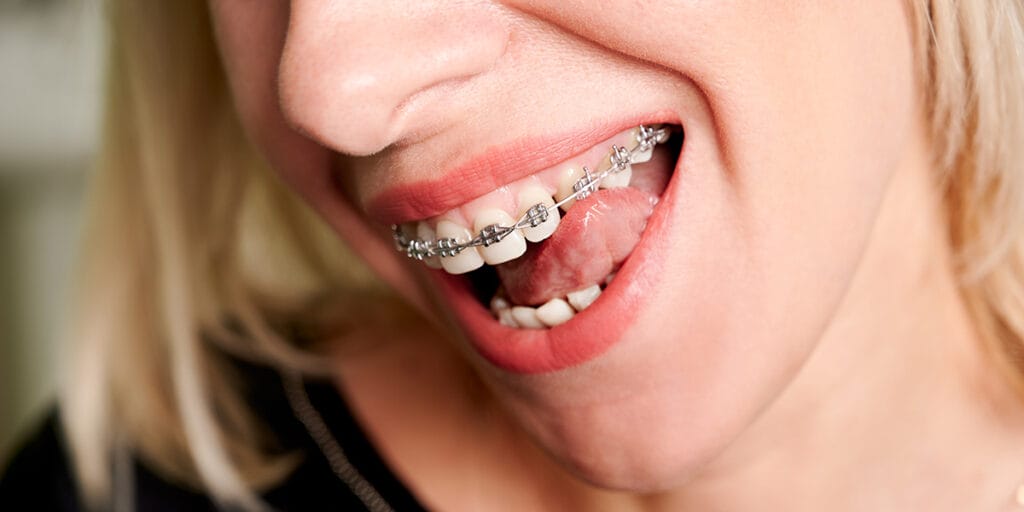Home - All About Braces - The Different Types of Dental Braces - Traditional Metal Braces

Casey practices orthodontics in our Stansbury Park Oral Health office.
Traditional Metal Braces
Traditional metal braces have been used for decades to correct misaligned teeth and bites — and they’re still one of the most reliable, effective orthodontic solutions available today. With modern improvements in comfort and appearance, today’s metal braces are sleeker and more efficient than ever.
What Are Traditional Metal Braces?

Metal braces are made of high-grade stainless steel and consist of brackets bonded to the front of each tooth, connected by a thin wire. The wire applies gentle pressure that gradually moves your teeth into better alignment over time. Periodic adjustments help guide the movement and ensure your treatment stays on track.
How Do Metal Braces Work?
Each component of traditional braces plays a role in tooth movement:
- Brackets: Small metal squares attached to the teeth that act as anchors for the archwire.
- Archwire: A thin, flexible wire threaded through the brackets that guides tooth movement.
- Ligatures (rubber bands): Tiny elastics that hold the archwire in place and allow for customization with color options.
Over time, the braces apply continuous, gentle pressure to reposition teeth and correct bite alignment.
Benefits of Traditional Metal Braces
- Effective for all cases: From mild crowding to complex bite problems, metal braces can handle it all.
- Cost-effective: Often more affordable than other treatment options.
- Durable: Made of tough materials that withstand active lifestyles and daily wear.
- Fully supervised: Adjustments are made in-office, allowing your orthodontist to closely monitor progress.
- Customizable: Patients can choose colorful elastics to show off personality or coordinate with school colors, holidays, or events.
What to Expect During Treatment
Most patients wear metal braces for 18–24 months, though treatment length can vary based on age and case complexity. You’ll visit our office every 4–6 weeks for quick adjustments to keep your smile moving forward. Some initial soreness is normal and subsides quickly as your mouth adjusts.
Who Are Metal Braces Best For?
Traditional metal braces are a great option for children, teens, and adults alike — especially for those who:
- Have complex orthodontic needs
- Prefer a cost-effective treatment option
- Don’t mind the appearance of brackets
- Want colorful bands to personalize their smile
Metal Braces vs. Clear Aligners
Not sure if metal braces are right for you? Here’s how they compare to Invisalign:
| Feature | Traditional Metal Braces | Invisalign |
|---|---|---|
| Appearance? | Visible metal brackets | Nearly invisible |
| Removable? | No | Yes |
| Best for? | All case types | Mild to moderate cases |
| Maintenance? | Brushing + flossing with tools | Remove to brush/floss |
| Customization? | Colored rubber bands | None |
Claim Your Complimentary Consultation
Wondering if traditional braces are right for you or your child? Our orthodontic team is here to help. Schedule a no-obligation consultation at one of our convenient locations and get expert guidance tailored to your smile goals.
Frequently Asked Questions
How long do I have to wear metal braces?
Do metal braces hurt?
Can I eat normally with braces?
How do I keep my teeth clean with braces?
Can I choose colors for my braces?
Yes! One of the fun parts of metal braces is picking out colored bands at each appointment. You can match holidays, school colors, or just your personal style.
Are metal braces better than clear aligners?
Both are effective, but traditional metal braces may be better for complex orthodontic cases. If you’re not sure which is right for you, we can help compare options during your consultation.